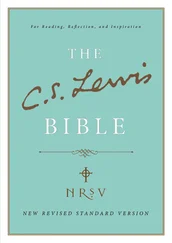Standard Template Library Programmer's Guide
Здесь есть возможность читать онлайн «Standard Template Library Programmer's Guide» весь текст электронной книги совершенно бесплатно (целиком полную версию без сокращений). В некоторых случаях можно слушать аудио, скачать через торрент в формате fb2 и присутствует краткое содержание. Жанр: Программирование, Справочники, на английском языке. Описание произведения, (предисловие) а так же отзывы посетителей доступны на портале библиотеки ЛибКат.
- Название:Standard Template Library Programmer's Guide
- Автор:
- Жанр:
- Год:неизвестен
- ISBN:нет данных
- Рейтинг книги:4 / 5. Голосов: 1
-
Избранное:Добавить в избранное
- Отзывы:
-
Ваша оценка:
- 80
- 1
- 2
- 3
- 4
- 5
Standard Template Library Programmer's Guide: краткое содержание, описание и аннотация
Предлагаем к чтению аннотацию, описание, краткое содержание или предисловие (зависит от того, что написал сам автор книги «Standard Template Library Programmer's Guide»). Если вы не нашли необходимую информацию о книге — напишите в комментариях, мы постараемся отыскать её.
Standard Template Library Programmer's Guide — читать онлайн бесплатно полную книгу (весь текст) целиком
Ниже представлен текст книги, разбитый по страницам. Система сохранения места последней прочитанной страницы, позволяет с удобством читать онлайн бесплатно книгу «Standard Template Library Programmer's Guide», без необходимости каждый раз заново искать на чём Вы остановились. Поставьте закладку, и сможете в любой момент перейти на страницу, на которой закончили чтение.
Интервал:
Закладка:
Categories: iterators, adaptors
Component type: type
Back_insert_iterator is an iterator adaptor that functions as an Output Iterator: assignment through a back_insert_iterator inserts an object after the last element of a Back Insertion Sequence. [1]
list L;
L.push_front(3);
back_insert_iterator > ii(L);
*ii++ = 0;
*ii++ = 1;
*ii++ = 2;
copy (L.begin(), L.end(), ostream_iterator(cout, " "));
// The values that are printed are 3 0 1 2
Defined in the standard header iterator, and in the nonstandard backward-compatibility header iterator.h.
| Parameter | Description |
|---|---|
BackInsertionSequence |
The type of Back Insertion Sequence into which values will be inserted. |
Output Iterator. An insert iterator's set of value types (as defined in the Output Iterator requirements) consists of a single type: BackInsertionSequence::value_type .
The template parameter BackInsertionSequence must be a Back Insertion Sequence.
None.
| Member | Where defined | Description |
|---|---|---|
back_insert_iterator(BackInsertionSequence&) |
back_insert_iterator |
See below. |
back_insert_iterator(const back_insert_iterator&) |
Trivial Iterator | The copy constructor |
back_insert_iterator& operator=(const back_insert_iterator&) |
Trivial Iterator | The assignment operator |
back_insert_iterator& operator*() |
Output Iterator | Used to implement the output iterator expression *i = x . [2] |
back_insert_iterator& operator=(const BackInsertionSequence::value_type&) |
Output Iterator | Used to implement the output iterator expression *i = x . [2] |
back_insert_iterator& operator++() |
Output Iterator | Preincrement. |
back_insert_iterator& operator++(int) |
Output Iterator | Postincrement. |
output_iterator_tag iterator_category(const back_insert_iterator&) |
iterator tags | Returns the iterator's category. This is a global function, not a member. |
template back_insert_iterator back_inserter(BackInsertionSequence& S) |
back_insert_iterator |
See below. |
These members are not defined in the Output Iterator requirements, but are specific to back_insert_iterator .
| Member function | Description |
|---|---|
back_insert_iterator(BackInsertionSequence& S) |
Constructs a back_insert_iterator that inserts objects after the last element of S . (That is, it inserts objects just before S 's past-the-end iterator.) |
template back_insert_iterator back_inserter(BackInsertionSequence& S); |
Equivalent to back_insert_iterator(S) . [3] This is a global function, not a member function. |
[1] Note the difference between assignment through a BackInsertionSequence::iterator and assignment through a back_insert_iterator . If i is a valid BackInsertionSequence::iterator , then it points to some particular element in the back insertion sequence; the expression *i = t replaces that element with t , and does not change the total number of elements in the back insertion sequence. If ii is a valid back_insert_iterator , however, then the expression *ii = t is equivalent, to the expression seq.push_back(t) . That is, it does not overwrite any of seq 's elements and it does change seq 's size.
[2] Note how assignment through a back_insert_iterator is implemented. In general, unary operator* must be defined so that it returns a proxy object, where the proxy object defines operator= to perform the insert operation. In this case, for the sake of simplicity, the proxy object is the back_insert_iterator itself. That is, *i simply returns i , and *i = t is equivalent to i = t . You should not, however, rely on this behavior. It is an implementation detail, and it is not guaranteed to remain the same in future versions.
[3] This function exists solely for the sake of convenience: since it is a non-member function, the template parameters may be inferred and the type of the back_insert_iterator need not be declared explicitly. One easy way to reverse a range and insert it at the end of a Back Insertion Sequence S , for example, is reverse_copy(first, last, back_inserter(S)) .
insert_iterator, front_insert_iterator, Output Iterator, Back Insertion Sequence, Sequence, Iterator overview
insert_iterator
Categories: iterators, adaptors
Component type: type
Insert_iterator is an iterator adaptor that functions as an Output Iterator: assignment through an insert_iterator inserts an object into a Container. Specifically, if ii is an insert_iterator , then ii keeps track of a Container c and an insertion point p ; the expression *ii = x performs the insertion c.insert(p, x) . [1]
There are two different Container concepts that define this expression: Sequence, and Sorted Associative Container. Both concepts define insertion into a container by means of c.insert(p, x) , but the semantics of this expression is very different in the two cases.
For a Sequence S , the expression S.insert(p, x) means to insert the value ximmediately before the iterator p . That is, the two-argument version of insert allows you to control the location at which the new element will be inserted. For a Sorted Associative Container, however, no such control is possible: the elements in a Sorted Associative Container always appear in ascending order of keys. Sorted Associative Containers define the two-argument version of insert as an optimization. The first argument is only a hint: it points to the location where the search will begin.
If you assign through an insert_iterator several times, then you will be inserting several elements into the underlying container. In the case of a Sequence, they will appear at a particular location in the underlying sequence, in the order in which they were inserted: one of the arguments to insert_iterator 's constructor is an iterator p , and the new range will be inserted immediately before p .
In the case of a Sorted Associative Container, however, the iterator in the insert_iterator 's constructor is almost irrelevant. The new elements will not necessarily form a contiguous range; they will appear in the appropriate location in the container, in ascending order by key. The order in which they are inserted only affects efficiency: inserting an already-sorted range into a Sorted Associative Container is an O(N ) operation.
Читать дальшеИнтервал:
Закладка:
Похожие книги на «Standard Template Library Programmer's Guide»
Представляем Вашему вниманию похожие книги на «Standard Template Library Programmer's Guide» списком для выбора. Мы отобрали схожую по названию и смыслу литературу в надежде предоставить читателям больше вариантов отыскать новые, интересные, ещё непрочитанные произведения.
Обсуждение, отзывы о книге «Standard Template Library Programmer's Guide» и просто собственные мнения читателей. Оставьте ваши комментарии, напишите, что Вы думаете о произведении, его смысле или главных героях. Укажите что конкретно понравилось, а что нет, и почему Вы так считаете.











